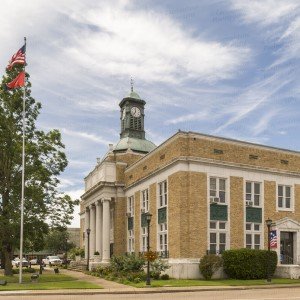Oral Arguments in Intel/VLSI Appeal Focus on Doctrine of Equivalents, Damages Calculation Issues
“The jurisprudence of this court requires a little bit more than just saying ‘it doesn’t matter’; you have to say why it doesn’t matter.” – Bill Lee, Counsel for Intel
On October 5, the U.S. Court of Appeals for the Federal Circuit (CAFC) heard oral arguments in VLSI Technology LLC v. Intel Corporation, an appeal following the massive $2.175 billion damages verdict handed by a Western Texas jury in March 2021 to VLSI for Intel’s infringement of two computer processor patents. The Federal Circuit judicial panel hearing the appeal drilled down on the sufficiency of VLSI’s expert testimony for establishing infringement under the doctrine of equivalents, as well as damages calculations that arguably relied upon data from non-infringing features of the accused technology.
Does Expert Testimony on Design Choice Provide Proper Linking Argument?
Near the outset of oral arguments, Federal Circuit Judge Alan Lourie noted that Intel has been found liable for nearly two-thirds of a billion dollars in damages for infringement not literally within the scope of the asserted claims. Judge Lourie added that, under the Federal Circuit’s 1996 ruling in Texas Instruments v. Cypress Semiconductor, plaintiffs in infringement cases must supply particularized expert testimony and linking arguments as to the substantiality of differences between features that literally infringe and those infringing within the doctrine of equivalency. This legal standard was not reflected in the jury instructions as reviewed by Judge Lourie.
Bill Lee, Partner at WilmerHale representing Intel, told the Federal Circuit panel that VLSI’s technical expert did not testify that the infringing equivalent was insubstantially different than a literally infringing embodiment. “All [the expert witness] said was, ‘It’s a design choice,’” Lee said, adding that Intel multicore processors utilize power control units (PCUs) to make clock frequency determinations on a system-wide basis in ways not described by VLSI’s patent. Lee also said it was “nonsensical” for VLSI to argue that the PCU was both sending and receiving clock frequency requests when the claim language required separation between the master device sending requests and the clock controller.
Jeffrey Lamken, Partner at MoloLamken representing VLSI, highlighted that VLSI’s equivalency arguments focused upon a single claim limitation in U.S. Patent No. 7725759, System and Method of Managing Clock Speed in an Electronic Device. Lamken pointed out that the claimed programmable clock controller includes “an embedded computer program… including instructions.” While a PCU communicating clock requests to a processing unit, or core, was required for literal infringement, Lamken argued that a request made by the PCU’s low-level p-code to decision instructions embedded in the PCU is a request falling within the claim’s scope even though the request occurs between two modules within the PCU.
Judge Richard Taranto asked why linking testimony on clock requests made by computer code wasn’t supplied by VLSI’s technical expert. Lamken countered that the technical expert testimony, aided by a diagram displayed to the jury, established that the clock request takes place on a single chip regardless of the request being made by the core or the PCU’s p-code. Later, Judge Lourie asked Lee why this didn’t satisfy the doctrine of equivalents, which only requires a showing that the equivalent is insubstantially different from a literally infringing embodiment. “The jurisprudence of this court requires a little bit more than just saying ‘it doesn’t matter’; you have to say why it doesn’t matter,” Lee responded, adding that under Judge Lourie’s articulation of the standard, doctrine of equivalents testimony in most jury trials could be established within 60 seconds.
PTAB Stay Following Massive Jury Verdict is Justice Denied to Patent Owner
Also at issue on appeal was the calculation of the $1.5 billion damages award for infringement of U.S. Patent No. 7523373, Minimum Memory Operating Voltage Technique. Judge Taranto said it was pretty clear that VLSI’s damages expert chose data inputs for his analysis that were based on sleep states using non-infringing features. Lamken argued that those inputs were used for processor simulations to assess the most accurate data model on power consumption as provided by Intel. “These are all Intel data,” Lamken said. “Intel doesn’t say any one of them is wrong or not representative.” In his rebuttal period, Lee countered that the non-infringing Core C7 sleep states used by VLSI’s expert had twice the residency, or minimum duration of idle state, as the infringing Packet C7 sleep states, resulting in a significantly different workload input when choosing from the processor data models.
The oral argument at the Federal Circuit is merely the latest chapter in the VLSI/Intel patent saga, which has seen considerable delays from parallel litigation filed in the District of Delaware and by inter partes review at the Patent Trial and Appeal Board (PTAB) as well as sanctionable efforts to extort VLSI. VLSI’s efforts highlight the troubles faced by U.S. patent owners according to Nick Matich, Principal at McKool Smith and former Acting General Counsel of the USPTO:
“VLSI won its judgment In March of 2021, but it still hasn’t collected two and a half years later and has many hurdles to clear before it could, including persuading the Federal Circuit to vacate Intel’s belated PTAB challenge to its patents. While the [America Invents Act] was intended to streamline patent litigation, the law has in many cases done the opposite by multiplying disputes over the same issues and delaying final resolution.”
Steve Brachmann
Steve Brachmann is a graduate of the University at Buffalo School of Law, having earned his Juris Doctor in May 2022 and served as the President of the Intellectual Property […see more]







